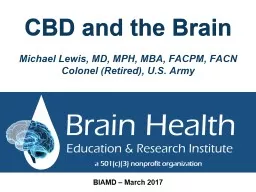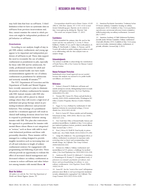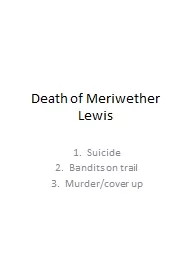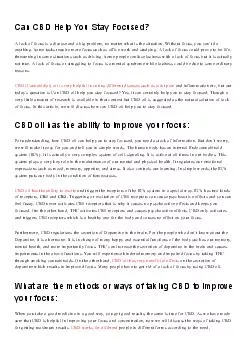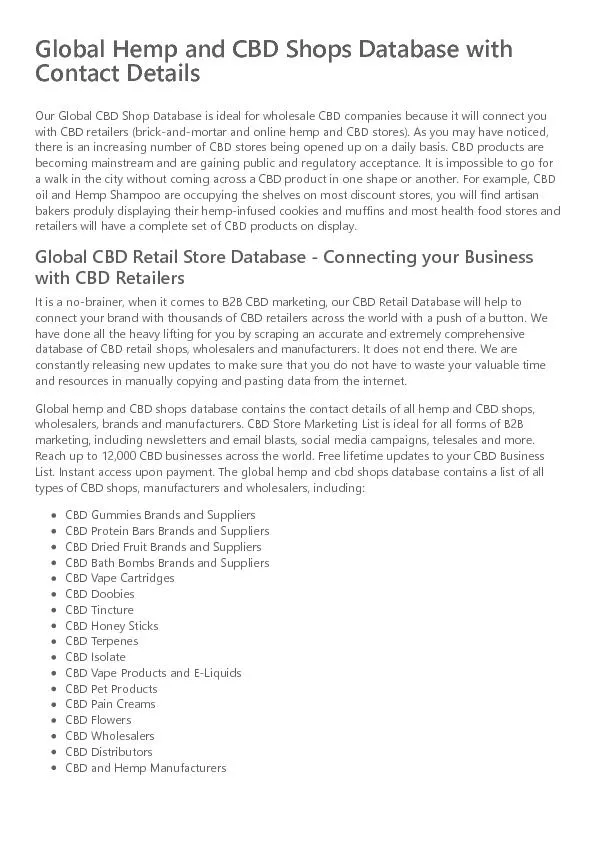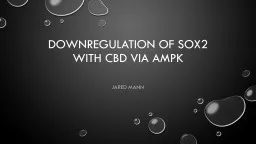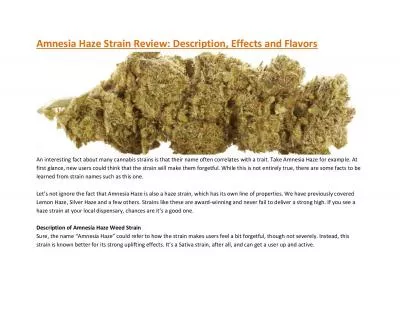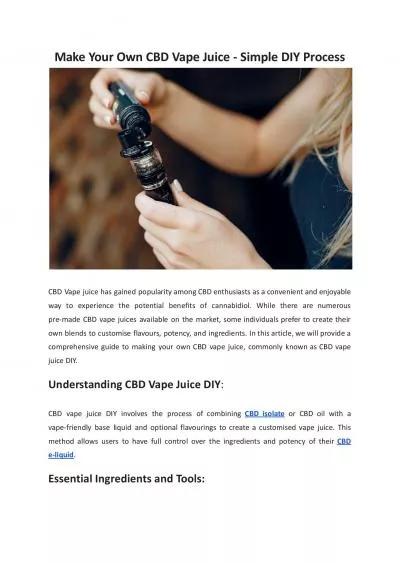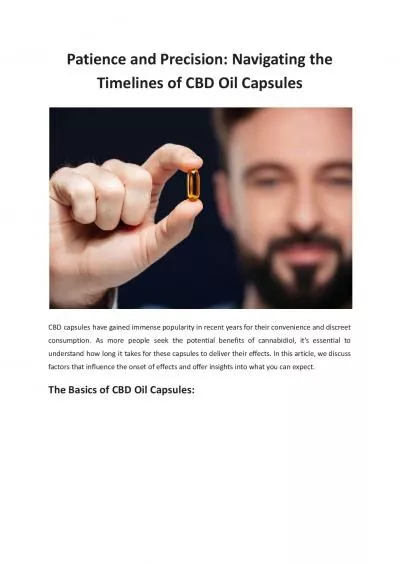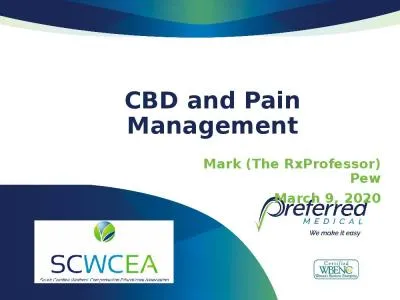PPT-CBD and the Brain Michael Lewis, MD, MPH, MBA, FACPM, FACN
Author : phoebe-click | Published Date : 2020-04-02
Colonel Retired US Army a 501c3 nonprofit organization BIAMD March 2017 What do these men have in common Aiden Hampson a neuropharmacologist at the Natl Inst
Presentation Embed Code
Download Presentation
Download Presentation The PPT/PDF document " CBD and the Brain Michael Lewis, MD, MP..." is the property of its rightful owner. Permission is granted to download and print the materials on this website for personal, non-commercial use only, and to display it on your personal computer provided you do not modify the materials and that you retain all copyright notices contained in the materials. By downloading content from our website, you accept the terms of this agreement.
CBD and the Brain Michael Lewis, MD, MPH, MBA, FACPM, FACN: Transcript
Download Rules Of Document
" CBD and the Brain Michael Lewis, MD, MPH, MBA, FACPM, FACN"The content belongs to its owner. You may download and print it for personal use, without modification, and keep all copyright notices. By downloading, you agree to these terms.
Related Documents

